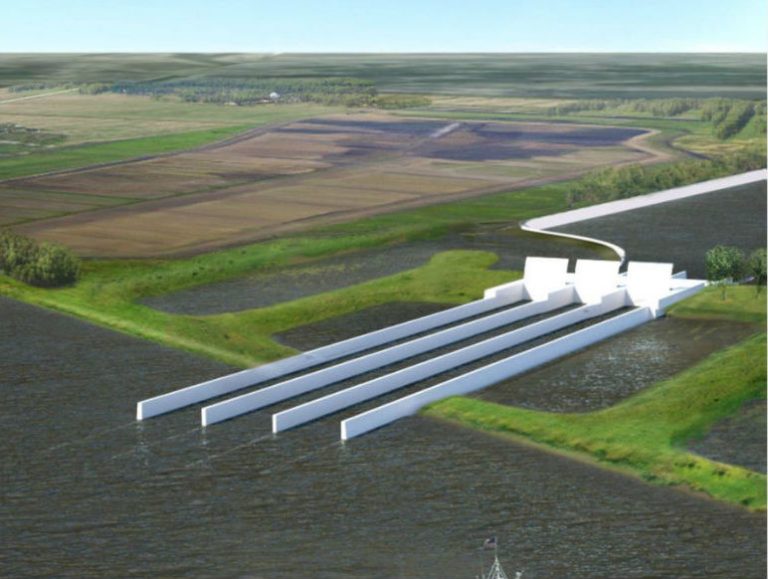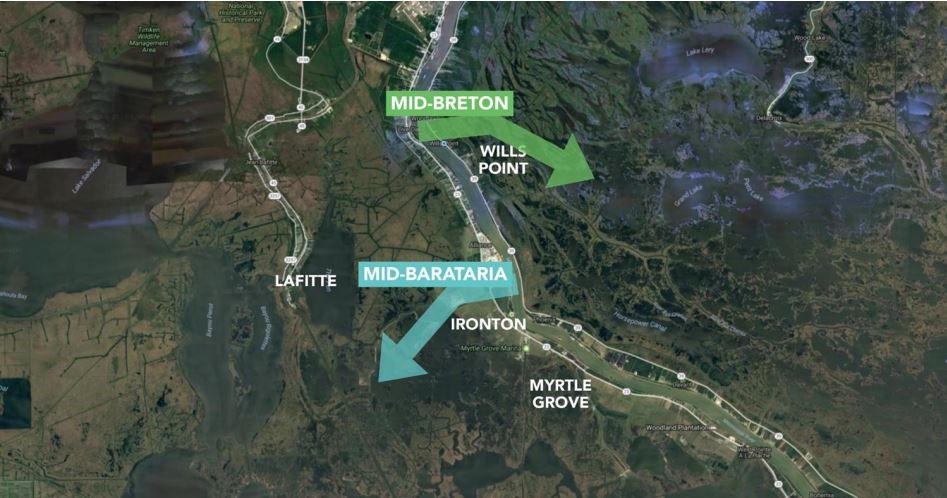We have much more to do and your continued support is needed now more than ever.
First Step Forward for Louisiana Restoration Project

One of the cornerstone projects to restore Louisiana’s Mississippi River Delta—the Mid-Breton Sediment Diversion—has reached a major milestone that brings it one step closer to construction. After decades of study and planning, Mid-Breton has reached the “scoping” phase of the planning process and that is a prime opportunity for those who care about the future of the delta (that’s you!) to ask questions about the project impacts. These questions will be addressed by project planners and will help ensure a sound project.
Why Are Sediment Diversions a Critical Tool for Delta Restoration?
The Mississippi River Delta is an iconic American landscape filled with marshes, swamps, twisting bayous, and barrier islands that teem with life, providing breeding, foraging, and stopover habitat for a variety of fish, birds, alligators and other wildlife, including the King rail. The Mississippi River Delta was built over the last 7,500 years as the river brought the sediment and freshwater from parts of 32 U.S. states and two Canadian Provinces down to Louisiana and the Gulf of Mexico. Today, this iconic landscape is disappearing at the rate of a football field of land every 100 minutes, but there is hope.

Land loss in the delta is happening due to a combination of natural and man-made factors, including hurricanes, rising sea levels, and the construction of river levees. River levees were built to protect communities from river floods and provide a consistent navigation channel for shipping, but these levees also cut off the consistent flow of sediment from the river into the wetlands.
Instead, much of that sediment is shunted out of the river and into the depths of the Gulf of Mexico, bypassing the sediment-starved wetlands. It doesn’t have to be that way. This sediment is a key ingredient to making wetlands more resilient to damage from storms and keeping their head above water as sea levels continue to rise.
What is the Mid-Breton Sediment Diversion?
Sediment diversions are restoration projects that will put the river back to work to build and sustain Louisiana’s deltaic wetlands. Built into the river levee, these gated structures can be opened when the river is running fast and carrying a lot of sediment, allowing that sediment-laden river water to flow into the marshes.
This project will build new land and help hold on to the existing wetlands for many years to come. The Mid-Breton Sediment Diversion project is located on the east bank of the Mississippi River, south of New Orleans and would provide a flow of up to 75,000 cubic per second (less than 10% of the river’s flow) from the river to Breton Sound Basin.
The loss of wetlands in this basin have left nearby communities more vulnerable to storm events and have decreased the wetland habitat available for wildlife like the secretive, marsh-dwelling King rail. Found in fresh and brackish marshes, the decline of King rail populations has been linked to wetland loss throughout North America. The Mid-Breton Sediment Diversion will help restore wetland habitat for the King rail and other species.

Why is Scoping Important and How Do You Participate?
This project has been studied and planned for a long time but recently hit a significant milestone. In July, the scoping period—one of the first critical step in the National Environmental Policy Act (NEPA) process—began on the project. Through August 16, it’s important that coastal stakeholders ask questions about project impacts.
These scoping questions will be addressed in the Environmental Impact Statement and will help ensure project managers are addressing key issues as they move toward construction. We’ve made it easy to weigh in! Check out this Mid-Breton Scoping Hub, with more project details, tips for commenting, and how to actually send in a comment.

Send your environmental questions to the U.S. Army Corps of Engineers.





















